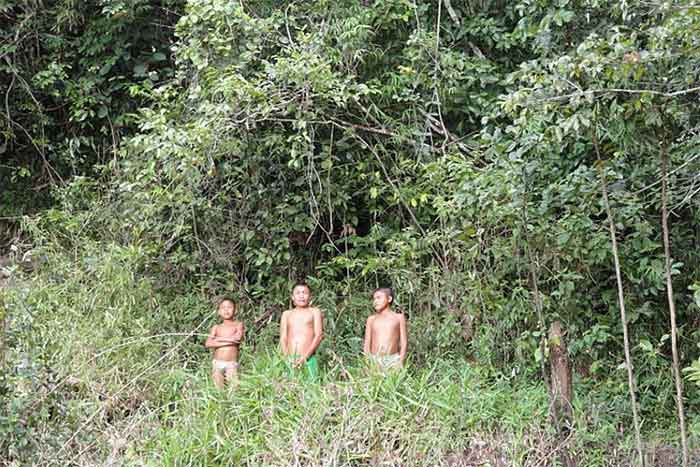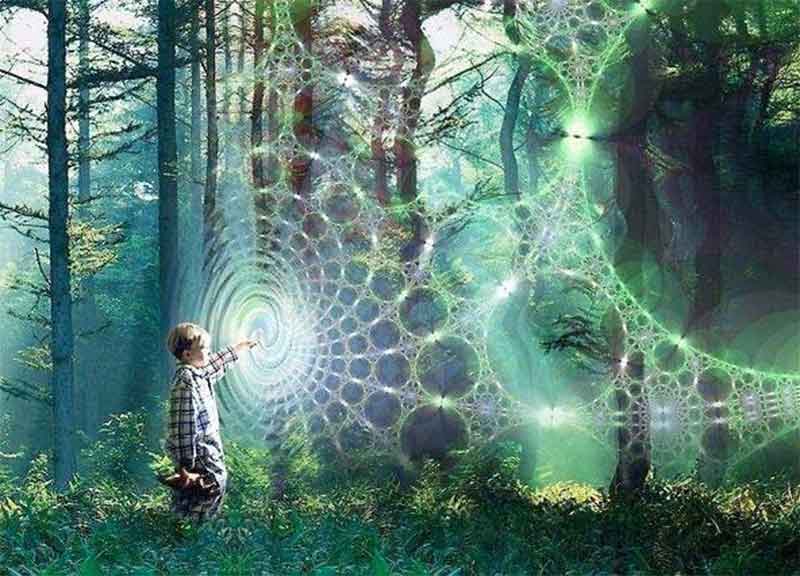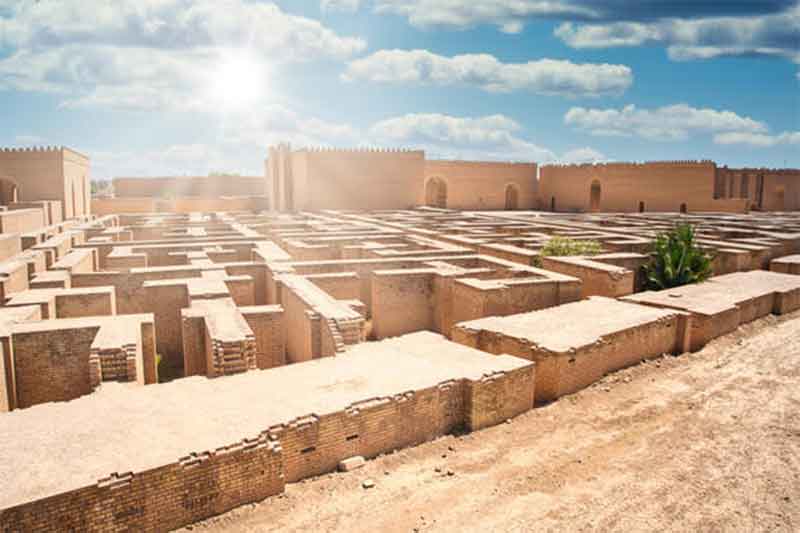
I first met Indigenous wisdom keepers as a child. After days of off-road driving to the Gran Sabana in Venezuela, we had arrived at the ancestral lands of the Pemón people, where they still lived. “Go fill up your thermoses with water from the river,” my father said. As I got out of the car with my round, red canteen strapped over my shoulder, I knew that I wanted to be a part of whatever was going on at that river.
This is my first memory of meeting those who treated the river as a respected being. At that time, I didn’t know the mental, emotional, and physical depth of this connection with the river. I didn’t know of their spiritual relationship with Tuwenkaron, the name the Pemón gave to the feminine sort of energy they experienced from the river. I just knew that I felt her too as I drank her exquisite water, and that engaging with her in this way made simple sense to me as a child.
Perhaps it was because in my beautiful home city of Caracas, 700 miles to the northwest, the river was regarded (and tragically still is) as a full-on dump, making me feel like we were living in a house with a sick relative that the adults seemed to be ignoring. And so, since that time, I have wanted to stay close to those who remembered ancestral ways of being in meaningful relationship with the rivers, the mountains, and the forests—people we know as Indigenous wisdom keepers.
Time passed, and I welcomed my daughter into this world and raised her in the ancestral lands of the Ohlone and Coastal Miwok people, now known as the San Francisco Bay Area. Naturally, I wanted to offer her what my parents had given me—an opportunity to be guided first-hand by Native knowledge holders. As a filmmaker, I started to envision a project where I would ask a young Native person if they might share one word from their ancestral language—a word that changed their life and a word they could offer to the next generation as medicine to heal our relationship with the Earth.
The resulting short film, One Word Sawalmem, has won a number of awards and was selected for 40+ festivals in 15 countries. It was screened at the Smithsonian, at UNESCO conferences, at dozens of community and educational events, and is scheduled to be broadcast on PBS. These are seven lessons that I learned and was reminded of through the experience of co-directing the film with Michael “Pom” Preston of the Winnemem Wintu tribe of Mount Shasta, California.
1. WISDOM. Indigenous wisdom is human wisdom, which has been miraculously preserved by Native people.
For thousands of years, as people indigenous to the Earth, we all prioritized a relationship with nature, grounded in kinship, centered around reciprocity, and infused with reverence. However, when faced with the forces that, to this day, threaten to destroy this way of life, Indigenous wisdom keepers have been the ones who continue to preserve this treasure of humanity against unthinkable odds. The people most capable of guiding us through the transition from exploitation to regeneration are the experts who have preserved the lineage of living respectfully with the Earth. By deeply appreciating and enthusiastically supporting the leadership of Indigenous wisdom keepers, we can all get back to remembering a way of life that any child knows is right, a way of life that can take us all into a future beyond our wildest dreams.
2. LAND. Environmental resilience requires Indigenous land to be returned in a significant way.
The treasured Traditional Ecological Knowledge of how to live in good relationship with the Earth is not learned through books. It’s transmitted through first-hand, place-based experiential learning, as Pom’s tribe has done across generations. Just like you wouldn’t be able to swim in the ocean after reading books on how to swim, we cannot give ourselves our best chance for environmental resilience without preserving Indigenous science. This is why U.N. climate scientists have affirmed that giving back the land is one of the most important things we can be doing right now to overcome the climate crisis. Even though Indigenous people now comprise less than 5% of the world’s population, they are protecting 80% of global biodiversity. The more land Native knowledge holders steward, the better off everyone will be.
3. LANGUAGE. Preserving native languages will give us the direction we need for renewal and restoration.
Our film revolves around one word: Sawalmem, roughly meaning “sacred water.” This word is common to many Indigenous languages but is untranslatable to the dominant colonial ones. As the word for “sacred water” has been lost, so has our regard for our relationship with and the overall health of the water. Preserving Indigenous languages is not about preserving thousands of ways of saying “banana.” Preserving the 7,000 Indigenous languages which are now endangered is about rescuing our place-based instructions and understanding for how to survive our current crisis and how to thrive. UNESCO recently declared the entire next decade to be dedicated to Indigenous languages, in acknowledgment of the depth of wisdom held in the untranslatable words of these languages. In these ancient words, we have the opportunity to offer our children the vocabulary of our future.
4. SPIRITUALITY. Remembering life-centered ways calls for spiritual commitment.
Our current environmental crisis is the result of misguided policy, economics, education, and commerce, but at its core, it is a spiritual crisis. As such, it requires us to recognize ourselves in nature and nature in ourselves. It means being in relationship with nature, which requires the acknowledgment of the natural world consisting of beings rather than things to be consumed. It means that in all our decisions, we consider the well-being of all humans and the more-than-human world for generations to come. It means rematriation, which Indigenous people around the world are urgently calling for: rendering the Earth sacred again. Spiritual awareness is the often unsung and dismissed form of intelligence, which is meant to complement our rational minds. Spiritual commitment requires humility to learn not only about our animal and plant and mineral neighbors on this Earth, but to learn from them as our elder teachers.
5. FRIENDSHIP. Developing authentic, supportive relationships can’t be rushed.
Any friendship takes time to develop, especially when the pain from countless cumulative injustices is real and raw. Well-meaning people might try to discourage you, as they tried with me, but if you are clear on your intentions, you can go into it prepared to be extra patient, quiet, humble, curious, and open. Expect to make mistakes and be ready to do the work to recover. One day as I unsuccessfully tried to keep a production day “on schedule,” I finally realized that my best bet was simply to turn the cameras off and go see whether anyone needed help in the camp kitchen. Those hours of carrot-peeling and potato-chopping with the community helped me get into a much more fruitful rhythm of friendship-building and did more for “allyship” than any filmmaking skill I could have offered that day.
6. ALIGNMENT. The deeper our relationship with nature, the more fulfilled we are with less.
Nature is our home. More than that, nature is part of us. So by enclosing ourselves indoors (90% of the time, on average, in the U.S.) we experience the painful effects of biological homelessness. We then try to fill that numbing void by overworking, overconsuming, and overmedicating. This in turn fuels the vicious cycle that results in society’s biggest problems, from the environmental crisis, to poverty, to our health emergency, to violence, and beyond. As we restore a nature-centered life, we reverse the negative feedback loop. We experience more regular wonder and awe. We naturally become happier, more deeply satisfied with less, and our actions become more aligned to our well-being and to the Earth’s.
7. HUMANIZATION. Uplifting storytelling is at the core of overcoming invisibility.
In the U.S., Native people are now so underrepresented in education, media, business, and policy that the extreme stereotype they are facing is known as invisibility. Storytelling is at the core of unraveling this dehumanization. But if the stories focus primarily on Indigenous victimhood, they do little to dissipate the stereotypes. We have an opportunity and urgency to tell more stories of Indigenous contributions, especially within a modern-day context. In the film, Pom shares his story of injustice, while at the same time emphasizing his perspective of the spiritual path towards healing—within ourselves, with each other, and with the Earth.
When I first met Pom, I informally shared my film idea with him. His response was simple and calm: “I know my word.” Later he would explain that it was as if he had been expecting me. He had a sense that we were meant to work together. This set the tone for how we would co-direct. Pom had complete authorship and creative control of the film. I offered my filmmaking skills in service of him being able to express himself directly. This model of cooperation is something that can be applied to any other skill area—from architecture, to agriculture, to medicine-making, to river restoration, and fire literacy—to amplify Indigenous voices, so that we can support each other more effectively in building a future that works for all of us, for generations to come.
Ultimately, this friendship with Pom, our collaboration on One Word Sawalmen, and the enthusiastic reception of the film have given me a lived sense of what Chief Caleen Sisk, Pom’s mother and the current Winnemem Wintu tribal chief, likes to say: “We need to get ready for good things coming.”
Click here to watch One Word Sawalmen for free.
NATASHA DEGANELLO GIRAUDIE is a filmmaker and nature practice teacher specializing in covering stories that deepen our relationship with the Earth. Her most recent film, One Word Sawalmem, which she directed with Michael “Pom” Preston of the Winnemem Wintu tribe of Mt. Shasta, won a number of awards and was selected for 40+ festivals around the world. Natasha’s work draws on her studies with the Dalai Lama and Thich Nhat Hanh; learning from some of the great naturalists of our time and spending time indigenous wisdom keepers from Venezuela, where she’s from, and California, where she currently lives. Her story has been featured on mindbodygreen, News from Native California, Threads of the Sun, and the Unstuck podcast. Natasha is based in Coast Miwok land, now know as SF Bay Area, and speaks Spanish, English, French and gets by with Italian and Portunhol. She can be reached at www.rosaguayaba.earth
Originally published by YES! magazine
GET COUNTERCURRENTS DAILY NEWSLETTER STRAIGHT TO YOUR INBOX
















































